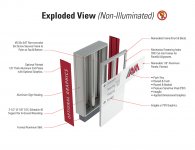I've been poking around trying to figure out if C3D would work for simple CAD and came to the conclusion it would be easiest to just ask.
I don't need anything fancy, but I do need to be able to model accurately. So functions like easy entry of dimensions when creating primitives, guides, measurement tools, etc. Much of what I do will be destined for 3d printing, so boolean operations that generate sane meshes are also a must.
Any opinions / advice? I realize C3D was not really created for this purpose; would I just end up fighting the UI?
Thanks!
I don't need anything fancy, but I do need to be able to model accurately. So functions like easy entry of dimensions when creating primitives, guides, measurement tools, etc. Much of what I do will be destined for 3d printing, so boolean operations that generate sane meshes are also a must.
Any opinions / advice? I realize C3D was not really created for this purpose; would I just end up fighting the UI?
Thanks!



